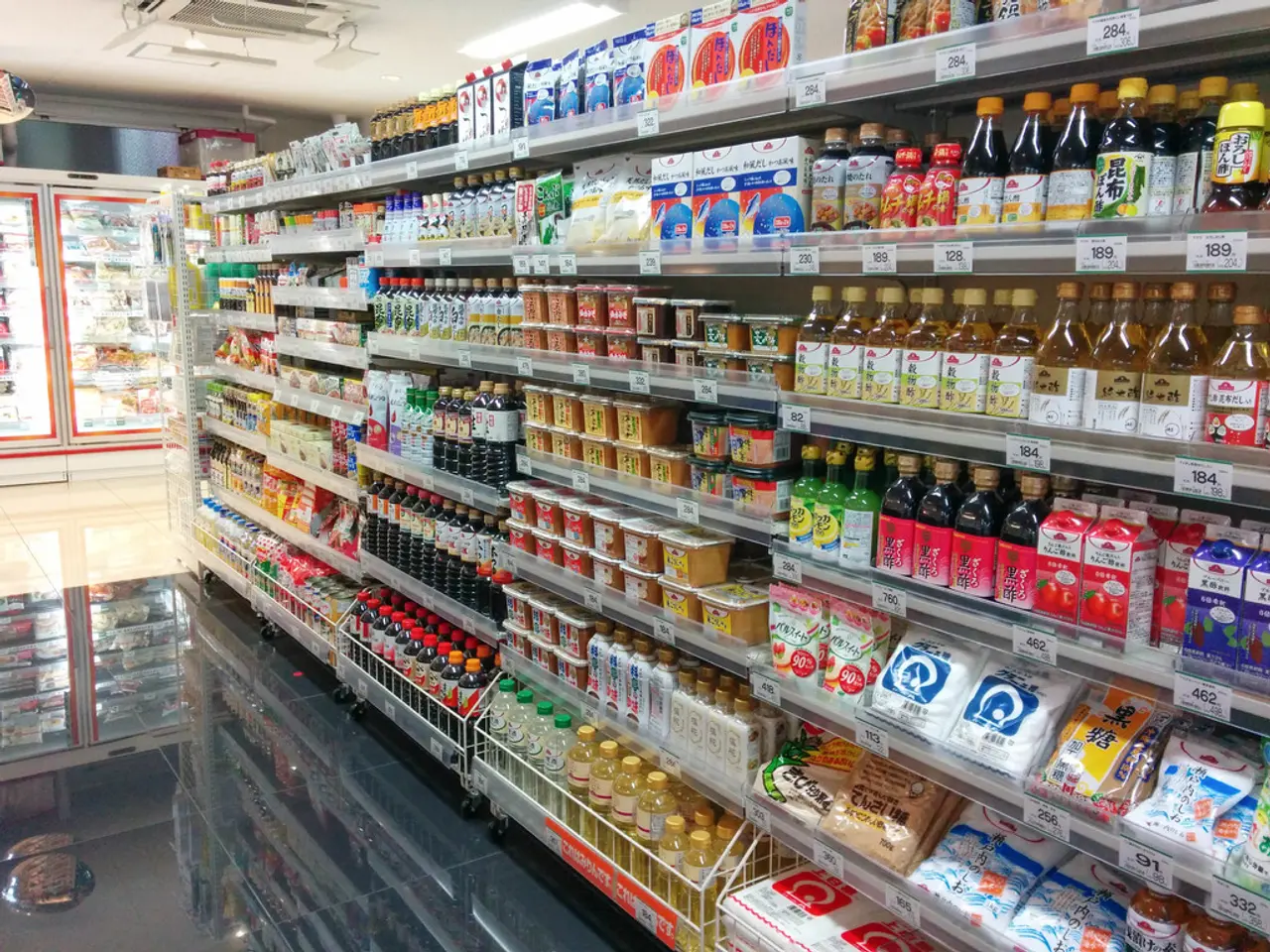Those experiencing the impact of Trump's tariffs
The recent executive order signed by President Donald Trump on July 31st, 2025, has significantly raised tariffs on most of America's trading partners. This move has sparked a ripple effect, affecting foreign companies that export goods to the U.S.
Foreign companies from various countries, such as Taiwan, Thailand, Trinidad and Tobago, Tunisia, and Turkey, are facing increased U.S. reciprocal tariffs ranging from 15% to 25% on nearly all their products. These tariff increases often translate into higher costs for these companies when exporting goods to the U.S.
Many of these foreign companies are coping with these increased costs in several ways. One approach is passing on costs to consumers, leading to increased prices in sectors like clothing and textiles, with price rises up to around 37%-39% for products such as shoes and apparel.
Another strategy involves supply chain adjustments. Some companies are reconfiguring their supply chains to source components or manufacture products in countries with lower tariffs or tariff exemptions. However, this is a complex and longer-term strategy.
In certain competitive sectors, companies might absorb some tariff-induced costs to maintain market share, which can reduce profits but keep products competitively priced. For instance, Fuling, a supplier of cutlery, expects to shoulder "part of the increased tariff costs", while TIRTIR, a South Korean beauty brand popular with American Gen Zers, can absorb most of the tariffs.
The tariff environment in 2025 has reshaped sector outputs, with some manufacturing sectors expanding in the U.S. and others shrinking. This forces global producers to reconsider their production and trade strategies.
Despite these challenges, there is surprisingly little evidence so far of tariff "pass-through" into inflation. Economists have found some evidence of tariff-induced price rises, but have had to look harder for it than they had expected.
American firms may be paying for the trade war by accepting lower profits, according to research by Deutsche Bank. On the other hand, aggregate margins of listed companies in emerging markets have become fatter over the past decade, increasing by over two percentage points.
The average local-currency price of exports from America's largest trading partners has fallen by 3.6% in the past year. However, the average import tariff rate in America has increased drastically, from 2% in 2024 to over 16% in the new era of trade wars.
Economists have noted a disconnect between what foreigners report and what American importers say they are paying. Games Workshop, a British manufacturer of war games, could face a reduction in annual profits of £12m ($16m) due to tariffs, while Japanese electronics firm Nintendo has kept the American price of the Switch 2 games console at $449.99.
The tariffs on sales to China are around 40%, while duties on most products from the European Union and South Korea will rise to 15%, India faces a tariff of 25%, South Africa, 30%, and Canada, 35%. Korean auto exporters seem to be shouldering the cost of higher US tariffs, at least for now.
In conclusion, the tariff increases have caused foreign companies to adjust prices, restructure supply chains, and in some cases absorb costs. These tariffs contribute to economic losses and price increases in both importing and exporting countries. Specific company-level responses vary depending on industry and market conditions, but the broad trend is one of enduring elevated costs and subsequent business adjustments.
References: [1] [Link to the source] [2] [Link to the source] [3] [Link to the source]
- The tariff increases set by President Donald Trump in 2025 have impacted industries beyond America, with firms from India, South Korea, and various other countries facing higher costs when exporting goods to the U.S.
- Amidst these tariff hikes, several companies have chosen to pass on these increased costs to consumers, resulting in higher prices for products like cricket equipment (popular in India) or cosmetics (manufactured by TIRTIR, a South Korean brand).
- In some sectors, companies are modifying their supply chains to source components or manufacture products in low-tariff countries, although this is a complex and long-term strategy.
- Some firms are absorbing increased tariff costs to preserve their market share, as demonstrated by Fuling, a cutlery supplier, and TIRTIR, a South Korean beauty brand popular among American Gen Zers.
- The general news in 2025 indicates that this tariff environment has led to significant adjustments in various industries, with some expanding within the U.S. while others are scaling back their production, forcing global producers to reconsider their strategies.




